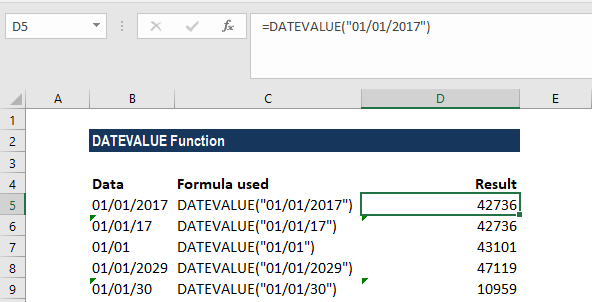In case you use Excel for data purposes, you may be looking for ways to improve your workflow. One Excel function to help with this is the DATEVALUE function. Right now, we will explore what the DATEVALUE function does, how to use it in your daily work lif and why it’s useful.
Table of Contents
Introduction to excel datevalue: What is the DATEVALUE Function?
Excel sometimes can be overwhelming if you work with large amounts of data. One way to make your data job easier is to use functions. So they can perform calculations and transformations on your data. The DATEVALUE function is one such function. And it can help you work more efficiently with dates in Excel.
value of date in excel
Using the DATEVALUE function can save you time when you work with files full of dates. For example, this can be an employee birthday list. Because Excel converts a date in text format to a date value that it can recognize. Thus, it is making it easier to perform calculations and other operations on that data.
How to use the DATEVALUE Function in Excel?
Using the DATEVALUE function is easy when you understand it. You can find the syntax of the function here below.
=DATEVALUE(date_text)
The date_text the argument is the text representation of the date you wanna convert. For example, if you have a cell written as text “5/1/2023”, you can use the DATEVALUE function to convert it to a date value like this below.
=DATEVALUE("5/1/2023")
date value function in excel
When you enter this formula into a cell, Excel will display the date value for this text of 5/1/2023. In this case, the date value is 44412.
The DATEVALUE function can work with cell references. Even if you have a cell with 5/1/2023 text, you can use the DATEVALUE function like this.
=DATEVALUE(A1)
This formula will convert the date text in cell A1 to a date value.
Examples of Using DATEVALUE Excel Function
Here are some examples of using the DATEVALUE function to give you more practical application ideas.
- Here you suppose you have a list of dates in text format like this.
5/1/2023
6/1/2023
7/1/2023
Now, you can use the DATEVALUE function to convert these dates to date values here.
=DATEVALUE(A1)
=DATEVALUE(A2)
=DATEVALUE(A3)
- In case you have a cell with a date in text format such as our example below.
May 1, 2023
Users can apply the DATEVALUE function to convert this date to a date value.
=DATEVALUE("May 1, 2023")
The date value will be
44412. - Here we will consider you have a cell with a date in text format. But the text is not in a format that Excel recognizes. It can be something like below example.
2023-05-01
You can use the TEXT function to reformat the text. And then, you can apply DATEVALUE function to convert the reformatted text to a date value.
=DATEVALUE(TEXT(A1, "mm/dd/yyyy"))
Again this one will convert the text 2023-05-01 to the date value
44412.
FAQs on excel datevalue function
how to use datevalue in excel with dates in different formats?
You need to use the TEXT function to reformat the date text before using the DATEVALUE function. This will ensure that Excel can recognize it. So, you can convert the date text to a date value without getting error messages tough.
What happens if I use the DATEVALUE function with text that is not a valid date?
If you use the DATEVALUE function with not a valid date, Excel will return a #VALUE! error. In case you wanna avoid this error, you should check the text you are using with the DATEVALUE function. And whether the date is a valid one.
How to Use datevalue formula in excel with date and time values?
So, we need to say DATEVALUE function only works with dates. You can use the INT function instead if you want to convert a date and time value to a date value. The INT function truncates a date and time value to just the date portion.
Can I use the DATEVALUE function to convert dates in non-English languages?
Yes, you can use the DATEVALUE function in non-English languages. However, you should first apply TEXT function to reformat the date text. So Excel can recognize it.
So, What is the maximum and minimum date value that Excel can recognize?
Excel can recognize dates from January 1, 1900 to December 31, 9999. Excel will not recognize any date outside of this range. And probably, you will not need a date later than that.
Is there a DATEVALUE function with dates in different time zones?
You can use the DATEVALUE function with dates in different time zones. However, you will need to consider the time zone offset when converting the date text to a date value.
Conclusion on DATEVALUE Excel Function
The DATEVALUE function is really good at converting date text to date values. So this action actually makes it easier to perform calculations and other operations on date data. Even if you work with small amount of data or a large dataset, the DATEVALUE function can help you to organize date formats and make calculations after that.
If you are not already using the DATEVALUE function in your Excel workflow, you should try it to avoid unnecessary manual calculations. Because you may be surprised at how much it can simplify your data jobs including different date formats with tons of cells.

A dedicated Career Coach, Agile Trainer and certified Senior Portfolio and Project Management Professional and writer holding a bachelor’s degree in Structural Engineering and over 20 years of professional experience in Professional Development / Career Coaching, Portfolio/Program/Project Management, Construction Management, and Business Development. She is the Content Manager of ProjectCubicle.
















